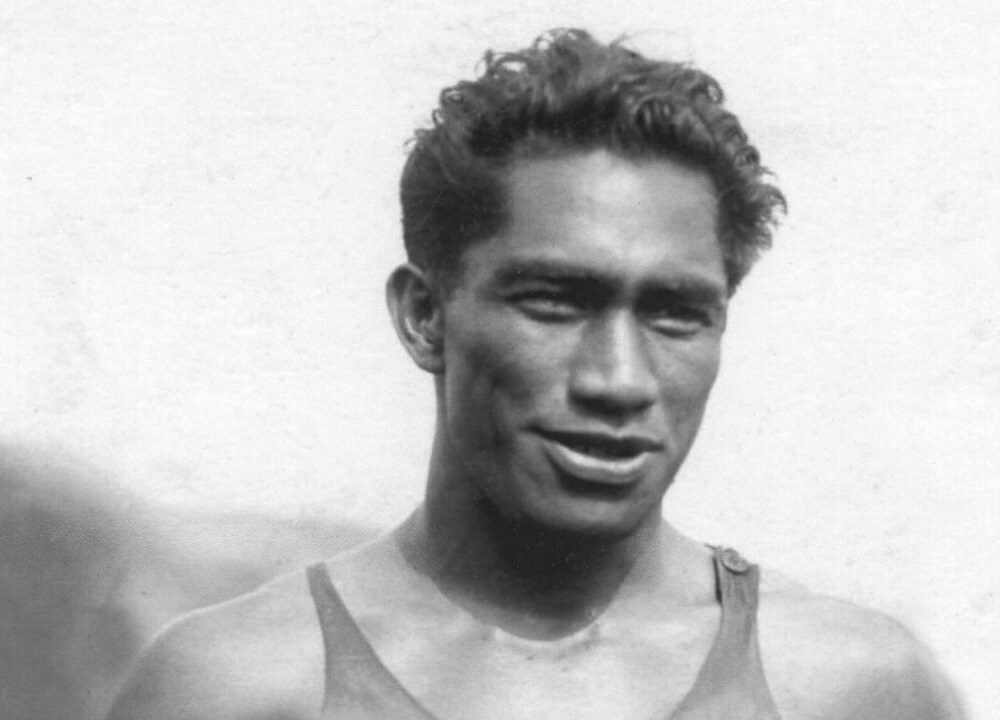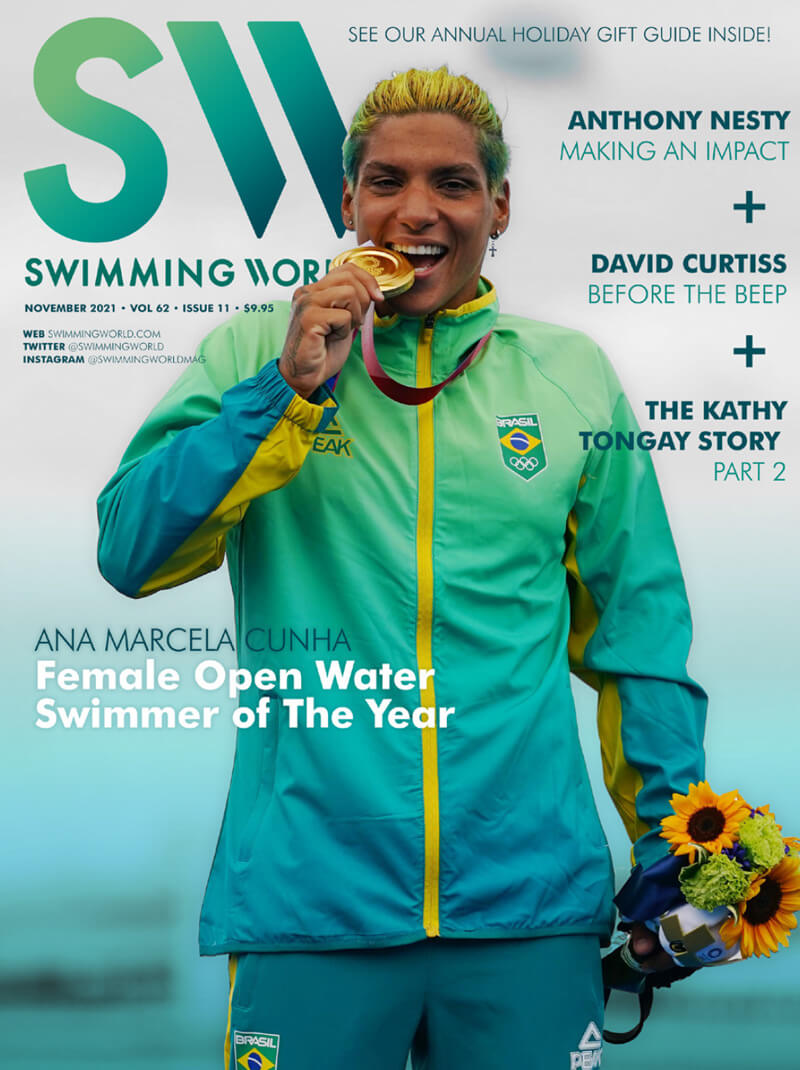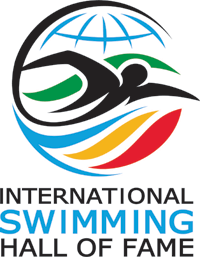Swimming World November 2021 Presents – Perhaps Overlooked…But Not Forgotten: 6 Hall of Famers Who Hold A Special Place In History

The latest issue of Swimming World Magazine
is now available for download in the Swimming World Vault!
Non-Subscribers Can Download This Issue Here
Perhaps Overlooked…But Not Forgotten: 6 Hall of Famers Who Hold A Special Place In History
By John Lohn
How could they be forgotten? Or overlooked? It doesn’t make sense, not with their credentials and the success they managed during their illustrious careers. Yet, there is a routine state in sports for some athletes—as elite as they might have been—to find themselves overshadowed by the exploits of others… or victims of the passage of time.
Don’t be mistaken. Diehard fans are going to know these names, and they might be able to specifically identify their achievements. Even a well-versed follower of the sport, though, might not have the appropriate acknowledgment for where these individuals rank on a historical basis.
As the Bible of the Sport, Swimming World places significant emphasis on history, and providing its readership with an appreciation for those who paved the way for the current generation of stars. So, as we creep closer to signing off on this Olympic year, we offer a look at six athletes—all members of the International Swimming Hall of Fame—who hold a special place in history, even if they are not always at the forefront of the mind.
DUKE KAHANAMOKU, UNITED STATES
Guys like Hungary’s Alfred Hajos, American Charlie Daniels and Great Britain’s Henry Taylor came before him, but Duke Kahanamoku can be considered the first global star of swimming. The Hawaiian-born sprinter captured back-to-back Olympic titles in the 100 meter freestyle, but with a caveat. His crowns arrived in 1912 and 1920, the 1916 Games wiped out by World War I.
Had international conflict not emerged, Kahanamoku would have been the overwhelming favorite for the 100 free title in 1916 and could have been the first swimmer to win an event at three consecutive Olympiads. Instead, a three-peat was not registered until 1964, when Australian Dawn Fraser won her third straight gold medal in the 100 freestyle.
For good measure, Kahanamoku secured a silver medal in his prime event at the 1924 Olympics, where Johnny Weissmuller captured gold and became swimming’s headliner. Really, it was the emergence of Weissmuller that largely left Kahanamoku as a secondary figure of the sport’s early days. The positive for Kahanamoku is the fact that he excelled in a second sport and was known worldwide as the Father of Surfing.
“Long before Michael Phelps and Mark Spitz splashed into the pool, Duke Kahanamoku emerged from the backwaters of Waikiki to become America’s first superstar swimmer,” wrote David Davis in his biography of Kahanamoku, Waterman: The Life and Times of Duke Kahanamoku. “The original ‘human fish’ won Olympic gold medals, set dozens of world records and topped the world rankings for more than a decade.”
MURRAY ROSE, AUSTRALIA
To Australians, who revere their distance stars, Murray Rose is a household name that is adored. But Rose, especially on the global scale and to the non-hardcore fan, is one of those athletes who doesn’t receive proper recognition. In part, that short stick can be connected to the rich tradition of distance swimming in the Land Down Under, and the more recent greatness—with enhanced media attention—of Kieren Perkins and Grant Hackett.
At the 1956 Olympic Games in Melbourne, a 17-year-old enjoyed a breakout competition, as he won the 400 freestyle and 1500 freestyle and was a member of the victorious 800 freestyle relay. At a time when Australia had experienced a dropoff from its previous success, Rose proved to be a spark for the future, and a rekindling of Aussie excellence.
Rose moved to the United States after the 1956 Games and enrolled at the University of Southern California, where he led the Trojans in NCAA action. In his next Olympic foray, at the 1960 Games in Rome, Rose repeated as champion in the 400 freestyle and was the silver medalist in the 1500 free, defeated by fellow Aussie John Konrads. A world record setter in the 400 freestyle, 800 freestyle and 1500 freestyle, Rose defined distance swimming.
“Murray Rose was certainly one of the greatest of all-time,” Konrads said after Rose’s 2012 death. “There’s Mark Spitz in the sprints and so on and Michael Phelps, but they’re short-distance swimmers in the professional era. I think taking into consideration the amateur era, Murray was the greatest of all-time.”
SHIRLEY BABASHOFF, UNITED STATES
Which approach should we take when analyzing the career of Shirley Babashoff? Should we appreciate what she accomplished? Or should we assess what could have been? Truthfully, a combination of those vantage points is what is necessary with Babashoff, who can be argued as the most-affected athlete by the East German systematic-doping program that was in operation from the early 1970s through the late 1980s.
As a nine-time Olympic medalist, with five of those medals from individual duty, Babashoff is an all-time great. She set multiple world records in freestyle events and was a hammer in relay action for the United States. Still, her hardware ledger could be much more, if not for the impact of performance-enhancing drugs by the East German machine.
At the 1976 Olympics, Babashoff was victimized in all three of her solo events, where she earned silver medals in the 200 freestyle, 400 freestyle and 800 freestyle. In all three races, an East German captured gold. Babashoff, too, was beaten for gold by doped-up East Germans at the World Championships.
To Babashoff’s credit, she spoke out against the super-fueled status of the opposition. She knew something was amiss and had the courage to vocalize her concerns. Sadly, Babashoff’s words were used against her, as she was dubbed “Surly Shirley” by the media and branded a sore loser. In reality, she was the opposite. At a time when administrators of the sport were afraid to investigate and act against what was a clear problem, Babashoff was a hero.
“We would like to get what we earned,” Babashoff has said. “We were going for the medals, not the cash. We were amateurs. We worked so hard. We earned it, and it was stolen right in front of everyone’s face—and no one did anything about it. It was like watching a bank robbery where they just let the crooks go and then say, ‘It’s OK.’”
 [PHOTO BY KAREEM ELGAZZAR / USA TODAY SPORTS]
[PHOTO BY KAREEM ELGAZZAR / USA TODAY SPORTS]
Get Swimming World Magazine and Swimming World Biweekly FREE When You
Become A Member of the International Swimming Hall of Fame
New! 30 Day Membership to ISHOF AND Digital Swimming World Subscription for just $10 a month!
Want more? Get a 1 Year ISHOF Family Membership With Swimming World Print AND Digital Subscription Order Now!
Non-Subscribers can click here to download this issue for only $5.94
FEATURES
012 2021 OPEN WATER SWIMMERS OF THE YEAR
by Dan D’Addona and David Rieder
Brazil’s Ana Marcela Cunha and Germany’s Florian Wellbrock both captured Olympic gold in Tokyo and repeated as the world’s elite open water swimmers in both 2019 and 2021.
014 2021 OPEN WATER HIGHLIGHTS
by Dan D’Addona
Although the Tokyo Olympic Games commanded the spotlight in 2021, there were many other open water highlights throughout the year.
018 ISHOF FEATURE: AQUATOTS MURDER CASE—THE KATHY TONGAY STORY (Part 2)
by Bruce Wigo
This is the second of a three-part story about “The Aquatots Murder Case” that first appeared in the October issue of Swimming World. It is about Kathy Tongay, a little girl whose father, Russell, had been training her almost from birth to be an expert diver and swimmer. When she died at the age of 5, her father was arrested for murdering his daughter.
022 PERHAPS OVERLOOKED…BUT NOT FORGOTTEN
by John Lohn
As we creep closer to signing off on this Olympic year, Swimming World offers a look at six athletes—all members of the International Swimming Hall of Fame—who hold a special place in history, even if they are not always at the forefront of the mind.
025 CONTINUING TO MAKE AN IMPACT
by David Rieder
Anthony Nesty’s accomplishments as a swimmer in the late 1980s and ’90s made him a national icon. But decades after that, he is still making a huge impact on the sport from a different vantage point—as a coach.
028 MENTAL PREP: BEFORE THE BEEP WITH DAVID CURTISS
by Shoshanna Rutemiller
030 NUTRITION: THE IMPORTANCE OF IRON—LOW MEANS SLOW!
by Dawn Weatherwax
Iron is a mineral that directly impacts performance.
COACHING
016 COACHING IN A CHANGING ENVIRONMENT (Part 1)
by Michael J. Stott
In the first of two articles, Swimming World explores how coaches and administrators coped with the recent unpleasantness of COVID-19.
036 SPECIAL SETS: AUDREY DERIVAUX—KILLER QUEEN
by Michael J. Stott
Young Audrey Derivaux of Jersey Wahoos has turned in comparable times to the 11-12 age group superstars who have excelled before her.
040 SWIMMING TECHNIQUE CONCEPTS: DISTRUST IN SWIMMING SCIENCE IS NOT A MYSTERY
by Rod Havriluk
The fact that general scientific information is routinely ignored provides some perspective about the difficulty in applying science to the sport of swimming. While a single technique element cannot guarantee success, American Lydia Jacoby’s Olympic victory suggests that using science can provide a competitive advantage.
042 SPECIAL SETS: DANIEL DIEHL—DEFINITELY DRIVEN
by Michael J. Stott
Daniel Diehl, 15, of the Cumberland YMCA Sea Otters is Maryland’s—and the nation’s—top-ranked male swimmer in the Class of 2024. In recent months, he has either broken or knocked on the door of several national age group records. In October, as the youngest male on the U.S. National Junior Team, he notched seven top 10 individual finishes at the FINA World Cup meets in Germany and Hungary.
044 Q&A WITH SWIM IRELAND’S NATIONAL PERFORMANCE DIRECTOR JON RUDD
by Michael J. Stott
045 HOW THEY TRAIN IRISH OLYMPIAN DARRAGH GREENE
by Michael J. Stott
TRAINING
039 DRYSIDE TRAINING: BACK TO BASICS (Part 2)
by J.R. Rosania
JUNIOR SWIMMER
047 | UP & COMERS: AVA BUHRMAN
by Shoshanna Rutemiller
COLUMNS & SPECIAL SECTIONS
007 THE OFFICIAL WORD
008 A VOICE FOR THE SPORT
009 DID YOU KNOW: ABOUT “DO YOU KNOW THAT….”?
032 HOLIDAY GIFT GUIDE
048 GUTTERTALK
049 PARTING SHOT
Swimming World is now partnered with the International Swimming Hall of Fame. To find out more, visit us at ishof.org




